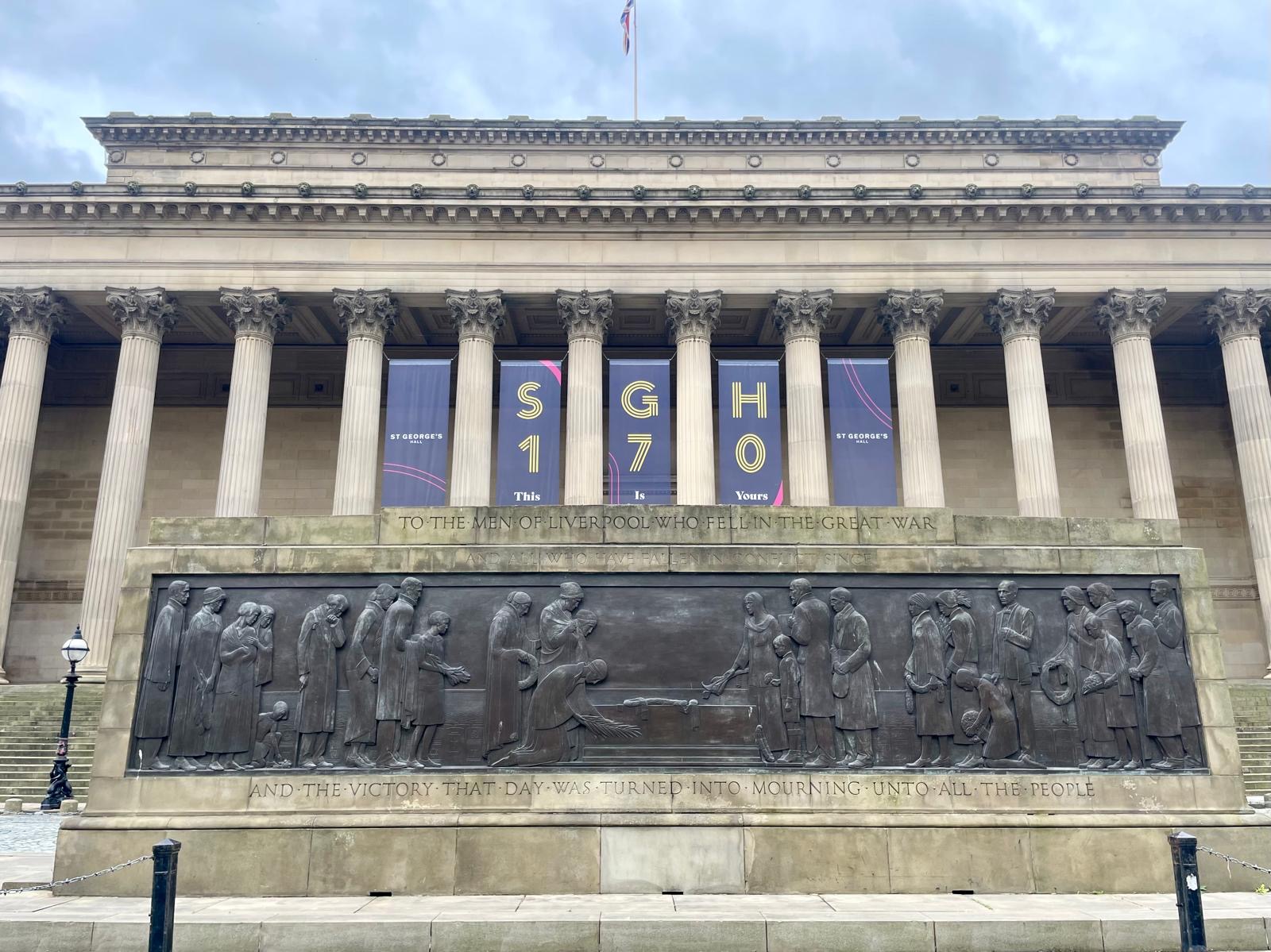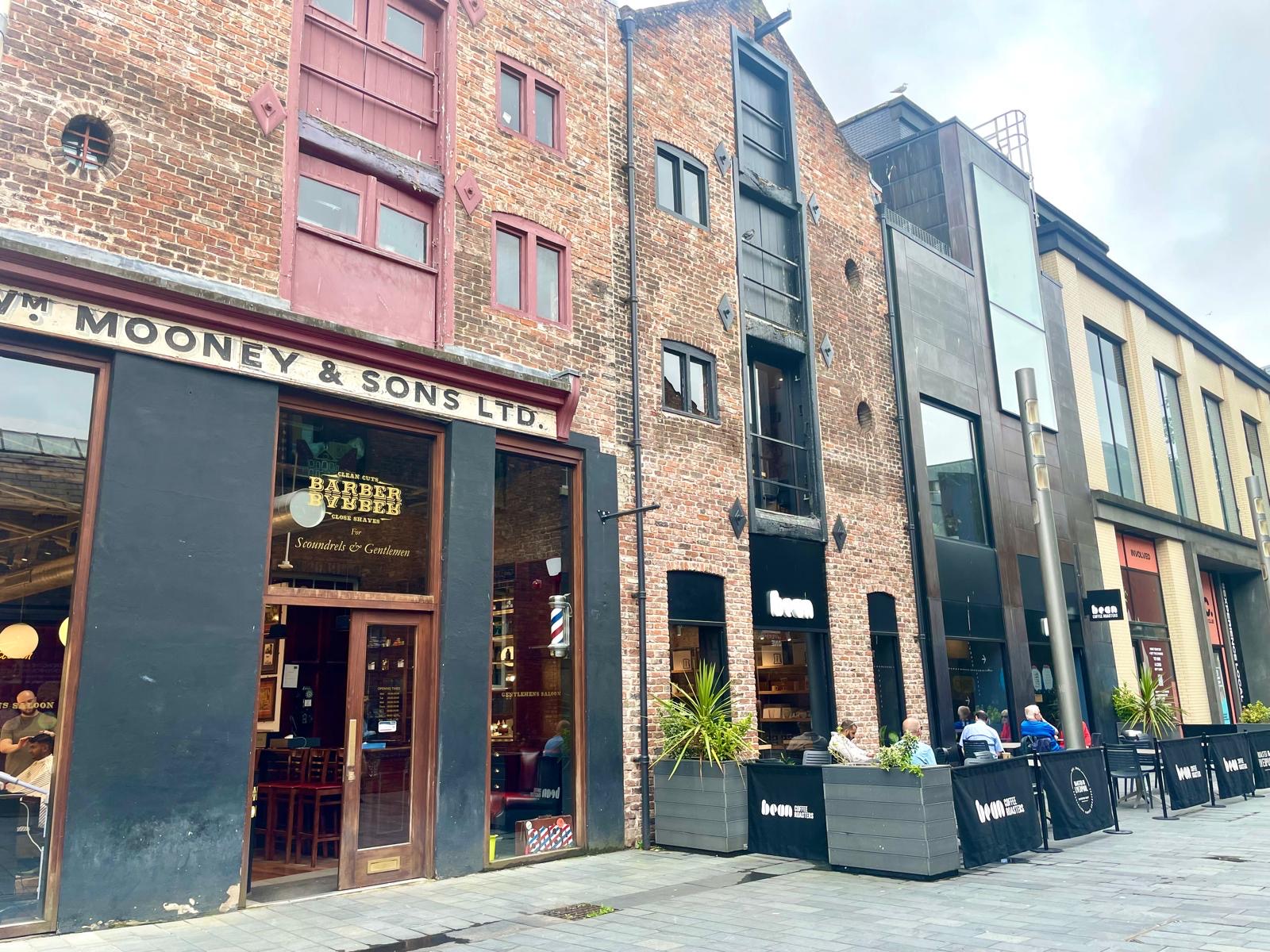Liverpool’s new buildings are the ugliest in Britain. So why are we in no rush to make things better?

Worse still, says David Lloyd, they’re mutating the few remaining streets that used to make us feel at home
In all the coverage about Lime Street winning the Carbuncle Cup – awarded to the ‘very worst new building in Britain’ – a sobering fact escaped largely unnoticed.
This is the eighth time this city has featured in the nominations list, and the second time we’ve won outright (with two nods to the same architects: Broadway Malyan). We have the dubious distinction of being the most-nominated city outside of London, despite the fact that we’ve seen way less actual development of any standard here than in, say, Manchester (three noms), or Glasgow, Leeds and Birmingham (one nom each).
It reminds me of that old Woody Allen joke about two elderly women in a restaurant. One of them says, "Boy, the food is really terrible here." And the other one replies, "Yeah, I know; and such small portions."

I’m no data scientist, thank god, but the stats point to one depressing conclusion: the percentage of lacklustre, or downright inappropriate new schemes in this city is way higher than anywhere in the UK. Of course, you may take the view that the judges of the Carbuncle Cup just hate Liverpool. But did UNESCO also hate Liverpool when it said more or less the same thing about the quality of our new builds, before withdrawing our World Heritage status?
There’s something very rotten in our urban design ambitions. There is a stark dichotomy between the big, successful show-stopping schemes we generally do well (Liverpool ONE, the Everyman, Central Library, the Bluecoat), and the nibbling incursions and small-scale developments scattered from Hardman Street to the Waterfront. And unless we change course, we’re gonna need a bigger display cabinet for all those cups.
These schemes aren’t the showy, look-at-me types. They’re sections of street, new sides of a square, extensions on rooftops or low-rise buildings erupting from surface car parks seemingly overnight. Get enough of these wrong, and they mutate the backcloth of our city far more than a gaudy skyscraper ever could.
So how did we get here? Part of the answer lies not too far away from Lime Street. Just a stroll away from the ersatz parade of etched panels lies St George’s Hall. In celebration of its 170th anniversary this year, banners flutter between its soaring Corinthian columns, proclaiming: This Is Yours.
But it’s not, is it? It’s not like I can rock up there to bash out “Cake by the Ocean” on the organ, while my close family lay out a picnic blanket on the Minton tiles. It’s part of the lie this city perpetuates – that our grand buildings, alone, define us.
What’s really mine and yours is the filler in-between. The jaunty rows of boozers and bookies crawling up Mount Pleasant; the tangle of alleyways off Dale Street; the bars, the barbers and the general stores. The places where we come together, forge friendships, buy our milk and grab a kebab.

These spaces are our connective tissue – places where we become enmeshed with the static charge of the city we love. You don’t get that from an unfurled flag on St George’s Hall, and you definitely don’t get it from a stencil of a building that’s been left to rot. But you used to get it in Lime Street, just as you got it at Cooper’s Emporium on The Strand, the once-animated London Road or Great Homer Street. These tribal muster stations are rich in ‘place consciousness’ – living conduits to our shared past. They’re the last remains of a time when Liverpool was big enough for us all to find a place we called home.
What this city forgets, as it commissions another drone shot of the Liver Buildings for an inward investment presentation, is that civic pride can swell in a neighbourhood cafe or hairdressers every bit as much as it can in a cathedral. Yet we look away as these places are wiped from our map.
I have some sympathy with Lime Street’s developers, Ion (then Neptune, whose ambitious plan to turn the ABC cinema into a media hub was killed by the council). They were undoubtedly right in their assertion that the street was beyond economic repair. Thanks to the council’s managed decline (or as councillor Nick Small claims, thanks to Kim Cattrall), the rot had set in long before they called in Broadway Malyan’s Matt Brook to reimagine this historic thoroughfare.
But they lost me at the stencil stage. They were, and remain, a gauche sop. This is Liverpool, not Blackpool. In 30 years’ time, when developers are called in to replace it, will they consider incorporating an etching of the much-loved etching? Seems unlikely, doesn’t it?
That said, Lime Street looks positively thoughtful compared to the roll call of similarly sized reimaginings scattered throughout our streets. Take the graceless lump of Commutation Plaza, where the happy jumble of Commutation Row once stood; the student favela of Grand Union behind Lime Street station; the ‘Queen of Hope Street’ on the corner of Hope Street and Hardman Street, whose brick cladding fell off within six months of its completion; the cheap as chips Travelodge in prime position on The Strand. Take anything up Islington, or the out-of-town business park aesthetic gracing the waterfront of Peel’s Prince’s Dock.
If you want a good example of how ill-considered small schemes can suck the life out of a neighbourhood, take the two new dead-eyed sides of Williamson Square, and compare them to the animated stretch of its one remaining undeveloped side (opposite the Playhouse). I look at that bustling row, from The Shakespeare to Paolo and Donato’s Italian Corner, and fret. Developers must surely be eyeing it up, desperate to turn it into a miniature zombie mall. So many mean-spirited schemes etching out the city’s small-minded ambitions.

We can build new slices of street, and successfully reanimate and reinvent spaces where people want to linger. Witness how brilliantly College Lane blends the old and the new. Look at the kids milling around Liverpool ONE’s Chavasse Park and tell me they won’t fondly recall the Saturday afternoons they spent there. Or stroll along Jamaica Street in the Baltic (reports of whose death remain greatly exaggerated). But as Pete Swift, CEO of urban and rural place design practice Planit agrees, we get it wrong at street level far more than we get it right.
“It’s down to a few factors,” Pete says, “but especially two. Guidance and values.”
Liverpool, Pete says, has focused too much on the stuff that he believes “doesn’t matter” – the dream of a Dubai on the Mersey, with a forest of skyscrapers lining the waterfront. “Meanwhile, we’ve been too light on the stuff that really does – real ambition at street level.”
Manchester, he says, “has only just started to care about the small things,“and you can track a point in time when that thinking was adopted.” The city’s new quality guidance framework, drafted by Planit, seeks to end “quick-fix solutions” and provide well-designed, sustainable and successful streets and high-quality vibrant neighbourhoods.
“It works on the premise of ‘comply or justify’,” Pete says. “If a developer wants to deviate from the compliance elements they must demonstrate that the scheme will deliver a finished project of the very highest quality. Proposals that fail to provide compelling justification will be refused.”
Imagine how far Laurence Kenwright’s memorial shed on the roof of Millennium House would have got if we’d had something like this in place (or any number of the city’s recent additions for that matter). “It’s about providing clear direction on what is required to deliver places where people want to live, work and spend time,” Pete says. “Only this joined-up approach will deliver a lasting legacy.”

“It’s a real passion for me and something I feel we could resolve quite easily here,” he adds. “Just venture out into some inner London boroughs and see how many award-winning backcloth buildings you can find. It’s why I love Copenhagen – because everything is just 10% more carefully considered.”
Other UK cities are doing it too. From York’s My City initiative to Southampton’s Design Advisory Panel, there are examples of successful small-scale developments and joined-up thinking making a big impact on the way our cities mature and evolve, and take us with them on their journey.
Meanwhile, Liverpool launched yet another plan this year. The Strategic Futures Plan sets out the city’s ‘long-term economic strategy’ to shape our future and ‘support the city on its improvement journey’. It doesn’t mention design, or the quality of the built environment, even once.
What’s the point in trying to secure a new life sciences company only for their prospective employers to take a walk around the city and be met with stretch upon stretch of shit-splattered cladding or vinyl-wrapped car park ramps? Increasingly, a city’s livability matters every bit as much as its connectivity.
Cities – real, great cities – are a mix of pieces and parts. Our set pieces are big enough to look after themselves. No one is planning to knock down St George’s Hall to build a hen party pad (at least, not yet). No one’s got an eye on turning the Metropolitan Cathedral into a roller disco. So maybe it’s time we just stop fawning over them and shift our focus?
In 30 years, no one will be campaigning to save any of these new developments. They’re the architectural equivalent of anti-vandal paint, pushing us away and preventing us from forming any kind of real attachment. How many happy memories have you made in Clayton Square recently? Yet this is just a karaoke verse away from the ebullient pubs of Cases Street.
Bookended by two beautiful old boozers, The Crown and The Vines, there are still parts of Lime Street that remind us of a time when developers built out of a love and pride for their city, and we – willingly and wholeheartedly – loved them back.
But I look at places like London Road, Renshaw Street, Hardman Street and Richmond Street and I worry. Can the council see beyond the buddleia and the crumbling pediments and appreciate them for the flourishing, essential social spaces they still are? Or will they continue down a path of atomisation and social dislocation, handing them over to developers who only see ROI, where we see places rich in embedded history and alive with future possibilities in the hands of creative and intelligent custodians?
It’s not too late. We are still a city of beauty and immense character. There remains a handful of places that hold gravity for communities and contribute to our sense of identity. They should, and could, point to everything we need to know about where we build and grow from here. They offer a window into who calls this place ‘theirs’, and the stories that connect us to each other. But they need our attention now.

Comments
Latest
This email contains the perfect Christmas gift
Merseyside Police descend on Knowsley
Losing local radio — and my mum
And the winner is...
Liverpool’s new buildings are the ugliest in Britain. So why are we in no rush to make things better?
Worse still, says David Lloyd, they’re mutating the few remaining streets that used to make us feel at home